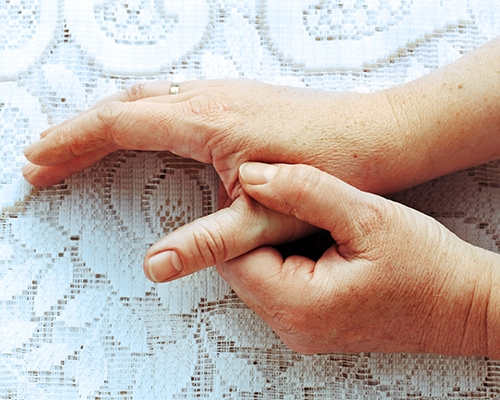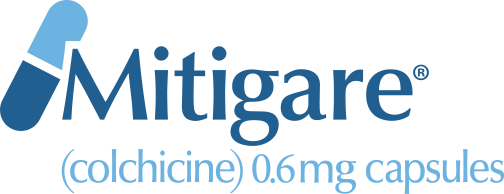
Gout, a painful form of inflammatory arthritis, has been in existence since ancient times.1 With its painful swelling and redness, gout often occurs in the big toe and may show up in other body parts, such as in the heels, instep, ankles, knees, elbows, hips, thumbs and fingers. Gout results from an overproduction by the body of uric acid, which can build up in tissues if it isn’t excreted.1 While gout is often considered a male disease, with a four-fold lower likelihood of occurring in women prior to menopause,2 the incidence in both sexes has been on the increase in recent decades,2 perhaps because Americans are getting older and heavier.3-5 After age 65, the gap between the genders with gout narrows to one woman to every three men.5 It’s believed that estrogen has a protective effect that is removed at menopause, thus accounting for the rise in gout in women who are postmenopausal.6,7
Menopause and Gout
The Nurses’ Health Study, published in 2010, looked at the association between menopause, age at menopause and risk of self-reported physician diagnosed incident gout among 92,535 women who were gout-free at the start of the study.8 Over 16 years of follow-up, the incidence of gout in women 75 years of age or older was more than 300 percent higher than in women younger than 45 years of age. Compared with premenopausal women, postmenopausal women had a 26 percent higher risk of gout.8
Estrogen and progesterone have a beneficial effect on how uric acid is cleared by the body, so the drop in these hormones when menstruation ends eliminates any protective effect. Gout occurred most often in women who had surgical menopause with sudden complete removal of hormone function. The age of the first period, as well as illnesses, athletic activity and eating disorders can also affect the risk of gout in women.8
Other co-existing diseases, such as high blood pressure, high cholesterol, coronary heart disease, diabetes, kidney and liver problems and heavy drinking are also risk factors in gout for women and men.9 However, women with gout were more likely to have high blood pressure and/or kidney problems, as well as to have taken water pills (diuretics), often prescribed for high blood pressure.10
Along with the later age of onset, women, unlike men, tend to experience more symptoms in the joints of upper limbs, and are less likely to develop tophi.11 Tophi are deposits of uric acid that form in the soft tissues and around joints, making bumps under the skin.1
Women can help prevent gout
Beyond talking to a doctor about prescription medications to help prevent gout flares, women with gout can make beneficial lifestyle changes.
- Drink more water. Drinking water may be a helpful part of a gout prevention plan because good hydration helps keep uric acid crystals from building up in the kidneys. Any fluids count towards your daily water intake, including coffee and tea, but not alcohol. Eight glasses of water per day is recommended.12
- Limit alcohol intake. Alcohol may raise your risk of a gout episode.13 Beer—even light, low-carbohydrate beer—appears to be worse than other alcoholic drinks because it contains malt.14
- Avoid sweet beverages. Skip sugary beverages, especially those containing fructose, which have been linked to a higher risk of gout.15
- Choose foods that are gout-friendly. Avoid foods that are high in purines, such as seafood (mussels, scallops, trout, haddock, mackerel, tuna, sardines and anchovies), as well as liver, which can increase the uric acid level in your blood. Choose healthy food options that are lower in purines, such as potatoes, squash and fruits and vegetables. According to the Mayo Clinic, a low-purine diet is great for anyone who currently has gout or has struggled with gout.16Eat low-fat dairy products, which may lower your risk of gout.16
- Exercise and manage your weight. Weight loss can help reduce your body’s burden of uric acid. Maintaining a healthy weight is key to many aspects of overall good health, including preventing gout flares. Talk with your doctor about sensible ways to reduce your weight if necessary, and increase your level of fitness with exercise.17
You can help prevent gout flares. See your doctor if you think you are experiencing symptoms of gout flares and ask what you can do to help prevent them.
Test Your Gout Knowledge
How much do you know about gout? Take this interesting and informative gout quiz to find out.
TAKE QUIZ
NOTE: This article was not written by a medical professional and is not intended to substitute the guidance of a physician. These are not West-Ward’s recommendations for gout flare prevention, but rather facts and data collected from various reliable medical sources. For a list of resources and their attributing links, see below.

